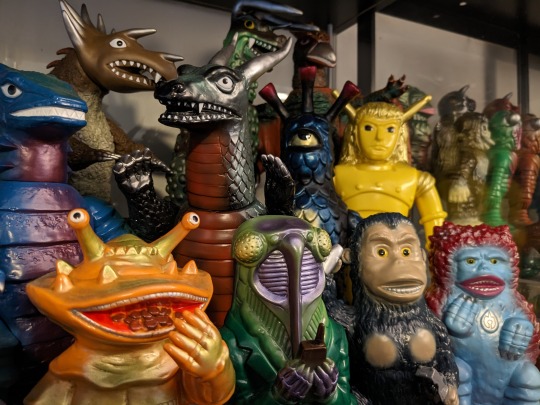#Ambassador Magma
Text


Cover illustration for Daito-sha: All about Osamu Tezuka. (1989)
(x)
#I can't tag everyone but I'll try my best#Tezuka#Astro Boy#Tetsuwan Atom#Mighty Atom#Jungle Taitei#Jungle Emperor Leo#Kimba the white lion#Black Jack#Hinotori#Phoenix#Unico#Princess Knight#Ribon No Kishi#Tezuka star system#Ambassador Magma#Dororo#Microid Z#Umi No Triton#Triton of the sea#The three eyed one#Mitsume Ga Toru#Wonder 3#W3#Son Goku the monkey#Buddha#Mod's post
279 notes
·
View notes
Text
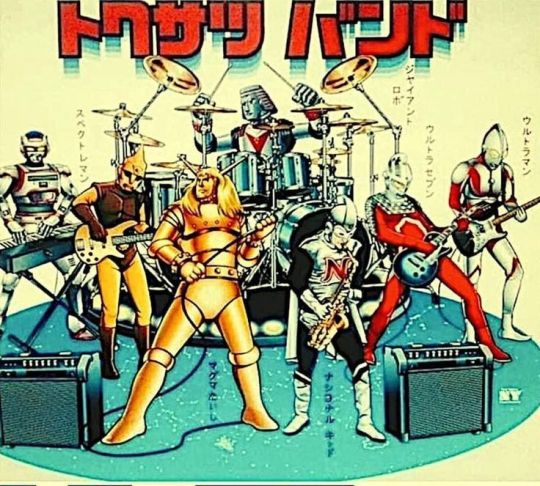
The Tokusatsu Band: Space Sheriff Gavan, Spectreman, Ambassador Magma, Giant Robo, National Kid, Ultraseven, Ultraman.
Available for wedding receptions, bar mitzvahs, and school dances.
#Tokusatsu Band#Space Sheriff Gavan#Spectreman#Ambassador Magma#Giant Robo#National Kid#Ultraseven#Ultraman#mecha#tokusatsu#Japanese superheroes
220 notes
·
View notes
Text
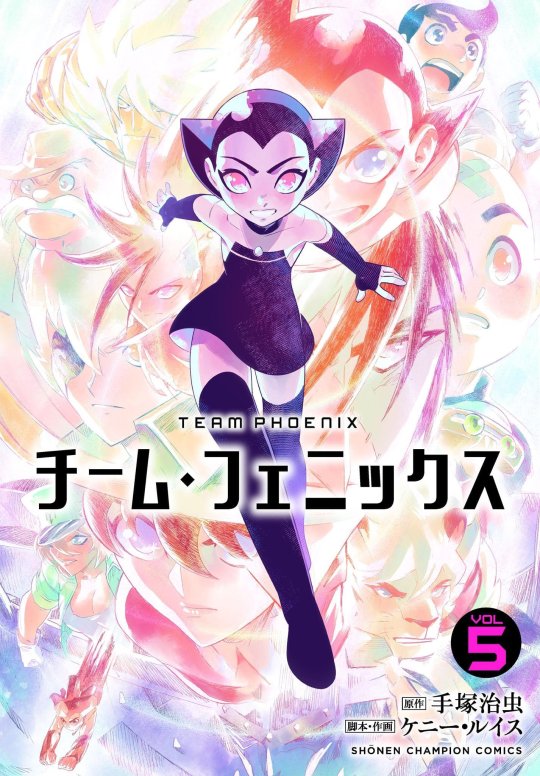
Source: VivaErManga (X / Twitter)
The cover art for Volume 5 of Team Phoenix, featuring Uran with various Tezuka Star System characters in the background including Atom, Black Jack, Sapphire, Shunsaku Ban, Magma, Hyakkimaru, Shinya Mito (from Midnight), Leo (Kimba), Sharaku, and Atlas among other characters.
Volume 5 will be Team Phoenix's final volume.
No release date is known at this time.
#Team Phoenix manga#Team Phoenix#Kenny Ruiz#Tezuka Star System#Astro Boy#Tezuka's Black Jack#Princess Knight#Dororo#The Three-Eyed One#Jungle Emperor#Ambassador Magma#Tezuka's Midnight
75 notes
·
View notes
Text

Magma the golden space giant 🚀💫
#Tezuka#Osamu Tezuka#手塚治虫#Tezuka Osamu#Tezuka Productions#Ambassador Magma#Magma Taishi#マグマ大使#Vintage manga#My art
39 notes
·
View notes
Text

💀 ...
I mean... Keiko most likely read at least some Osamu Tezuka manga growing up, right?
I made this instead of working on my AU... Or, you know, sleeping...
#kaze to ki no uta#kazeki#keiko takemiya#astro boy#mighty atom#umataro tenma#dr tenma#ambassador magma#osamu tezuka star system#ambassador magma goa#osamu tezuka#jean-pierre bonnard#you take a stinky man with curly dark hair plus an evil space conqueror who collects children and you get.... ugh
11 notes
·
View notes
Photo
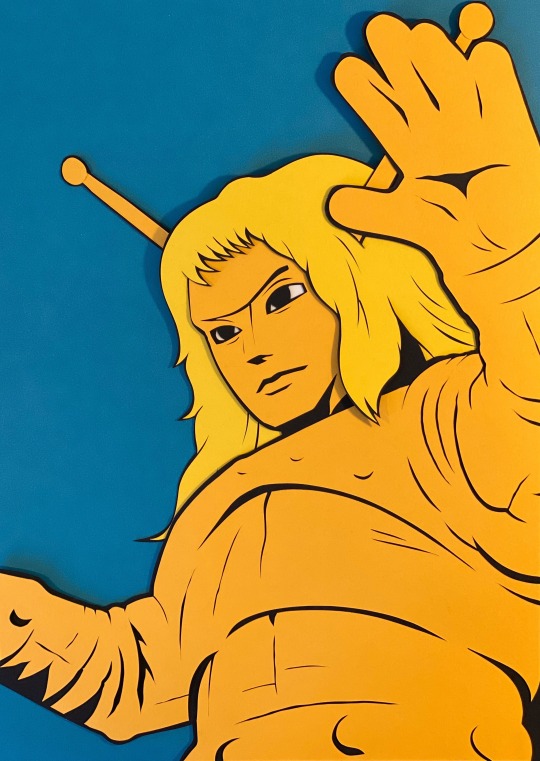
Ambassador Magma (Goldar) from Space Giants paper cut out
27 notes
·
View notes
Photo
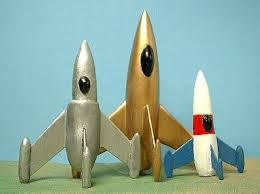
7 notes
·
View notes
Text

@takkynoko @super-saiyan-rose @jade-lop @jenndubya @modrew71 @himitsusentaiblog @mikifujimoto @vibrantpuppeteer @angelic-fragments @tokutaliaa @renkon @mrdinomaiz @pkmurasaki @firecraker-j @submissiveking99 @kurenaiwataru @washipink @ineedsomesleeptoday @kaikaifilu7248 @askrikkaiandhyotei @jmcdra @natekleh @thathyenaslookingbreezy @kanacaecilius @i-am-randomtrash00
0 notes
Text
Spectreman and Ambassador Magma sub when
1 note
·
View note
Text




Osamu Tezuka ukulele album cover (2009)
The full album is up on the internet archive to listen to free. My favorite tracks are the Ambassador Magma cover (track 8) and the Wonder 3 cover. (track 11)
(x)
#Tezuka#Tezuka Osamu#Osamu Tezuka#Astro Boy#Mighty Atom#Astro#Uran#Ochanomizu#Jungle Taitei#Jungle emperor Leo#Kimba the white lion#Kimba#Princess Knight#Ribon no kishi#Princess Sapphire#Sapphire#Tink#Ambassador Magma#Magma#Wonder 3#W3#Bokko#Nokko#Pukko#Tezuka star system#Hamegg#Lamp#Hyotantsugi#Mod's post
132 notes
·
View notes
Text
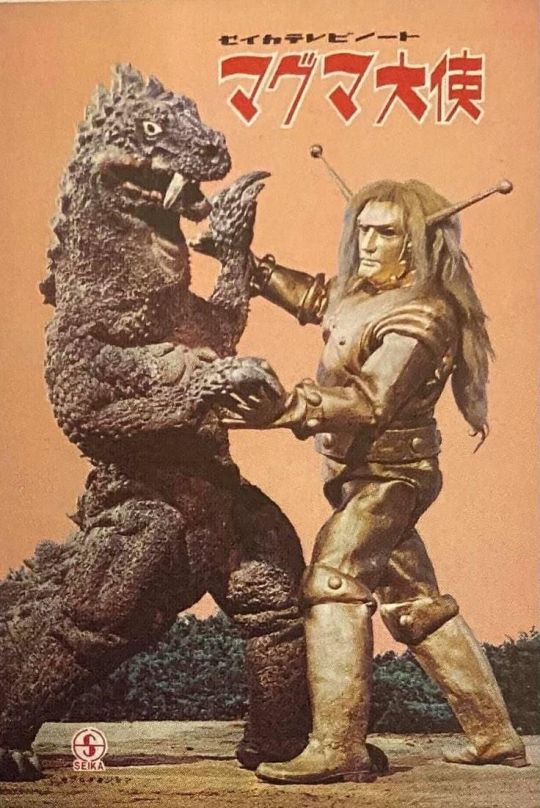
Goldar introduces Aron to ballroom dancing.
#The Space Giants#Ambassador Magma#Goldar#Aron#mecha#kaiju#tokusatsu#suitmation#Toei#Osamu Tezuka#Japanese superheroes
20 notes
·
View notes
Photo


Original artwork used in the Team Phoenix manga.
Artwork is drawn by Kenny Ruiz and colored by Noiry.
#Team Phoenix manga#Team Phoenix#Kenny Ruiz#Noiry#Tezuka Star System#Astro Boy#Princess Knight#Ribon no Kishi#Jungle Emperor#Kimba the White Lion#Ambassador Magma#The Three-Eyed One#Mitsume ga Tooru#Tezuka's Black Jack#Black Jack#Dororo#Tezuka's Big X#Big X
260 notes
·
View notes
Text
Giant Robo (special effects)
youtube
Mitsuteru Yokoyama and Osamu Tezuka are often compared as Japan's representative science fiction cartoonists, but Yokoyama Mitsuteru's talent may surpass Tezuka Osamu by far. They are competing to release their works at the same time, but Yokoyama is often the winner. "Astro Boy" (Tezuka) and "Tetsujin 28" (Yokoyama), "Triton of the Sea" (Tezuka) and "Babil II" (Yokoyama). Tezuka likes to talk about robots with human minds, but Yokoyama hardly ever talks about them. "Magma Ambassador" (Tezuka) and "Giant Robo" (Yokoyama)are the same, but "a robot that should not have a heart, Giant Robo" ignores the commander's order and sacrifices himself. The action brought tears to the young men and women of the viewers at the time. The heartfelt actions of those who do not have a heart touch people's hearts.
ジャイアントロボ
日本の代表的なSF漫画家として、横山光輝と手塚治虫はよく比較されるが、横山光輝の才能は、手塚治虫を遥かに凌駕するのではないか。同時期に競うように作品を発表しているが、横山に凱歌があがることが多い。「鉄腕アトム」(手塚)と「鉄人28号」(横山)、「海のトリトン」(手塚)と「バビル2世」(横山)など手塚は「人間の心を持つロボットを好んで取り上げるが、横山はほとんど取り上げない。「マグマ大使」(手塚)と「ジャイアントロボ」(横山)も同様だが、「心を持たないはずのロボット、ジャイアントロボ」が、命令者の命令を無視して、自己犠牲の行動に出たことは、当時の視聴者の若い男女の涙を誘った。なまじ心を持たない者の心ある行動が、人の心を打つのである。
#Giant Robo#special effects#Babylman#Mitsuteru Yokoyama#Osamu Tezuka#science fiction cartoonists#Astro Boy#Tetsujin 28#Triton of the Sea#Babil II#Magma Ambassador#Youtube
17 notes
·
View notes
Text

Tokusatsu, ("filmación especial") es un término japonés que se aplica a cualquier película o serie de televisión de acción real en la que se haga un uso intensivo de efectos especiales.
Las producciones de tokusatsu suelen englobar mayoritariamente los géneros de ciencia ficción, fantasía o terror, pero otros géneros también tienen cabida. Los tipos más populares incluyen el kaijū, películas de monstruos como las franquicias fílmicas Godzilla o Gamera, series de televisión de superhéroes como Kamen Rider y Metal Hero, y series de mecha como Giant Robot.
Algunas producciones combinan varios de estos subgéneros, por ejemplo Ultraman y Super Sentai Series.
El tokusatsu es uno de los modos de entretenimiento más populares en Japón y, salvo algunas excepciones notables, sus producciones no son ampliamente conocidas fuera del mercado asiático.
El tokusatsu tiene sus orígenes en el antiguo teatro japonés, específicamente en el kabuki con sus escenas de acción y lucha, y en el bunraku que utilizaba algunas de las primeras formas de efectos especiales en las marionetas. El tokusatsu moderno, sin embargo, no comenzó a tomar forma hasta principios de los años 1950, con el nacimiento de Godzilla, uno de los monstruos kaijū más famosos de todos los tiempos.
El artista de efectos especiales Eiji Tsuburaya y el director Ishirō Honda se convirtieron en los responsables de Godzilla. Tsuburaya se inspiró en la película estadounidense King Kong para formular muchas de las técnicas que se convertirían en señas de identidad del género, como la llamada suitmation, que es el uso de un actor con un disfraz para interpretar a un monstruo gigante combinado con el uso de ciudades en miniatura. Godzilla cambió para siempre el paisaje de la ciencia ficción, la fantasía y el cine japonés, creando una visión japonesa única en un género normalmente dominado por el mercado estadounidense.
En 1954, Godzilla inició el género kaijū en Japón, que mantuvo una gran popularidad durante varias décadas, liderando el mercado personajes como el mencionado Godzilla, Gamera y King Ghidorah.
Sin embargo, en 1957, Shintoho produjo la primera serie en la que apareció el superhéroe Super Giant, haciendo que la popularidad se dirigiera a los héroes enmascarados. Junto con el anime Astro Boy, las series de Super Giant tuvieron un profundo efecto en el mundo del tokusatsu. Al año siguiente, se estrenó Moonlight Mask, la primera de numerosas series de televisión de superhéroes que conformarían uno de los subgéneros tokusatsu más importantes.
Tras estas producciones, llegaron las primeras series tokusatsu en color, Ambassador Magma y Ultraman, que auparon el género kyodai hero, en el que un protagonista de tamaño normal crecía a tamaños gigantes para luchar contra monstruos también gigantes.
7 notes
·
View notes
Text

Official announcement! Harboring, my Kyodai Hero story (in the tradition of Ultraman, Ambassador Magma) will be published this summer by ELJ Editions!
If you enjoyed Shin Ultraman but feel ready for another interpretation of the character archetype, look forward to Harboring, which examines the alien hero not only as an immigrant to our planet but to Japan specifically. Could such a being ever really make a home here? Protect it against the others who try to come here? And at what cost?
This was a joy to write. I wrote it wanting to finally give something to the kaiju world that means so much to me. And here it is. I hope you'll give it a try this summer! Order links to follow in the coming months.
24 notes
·
View notes
